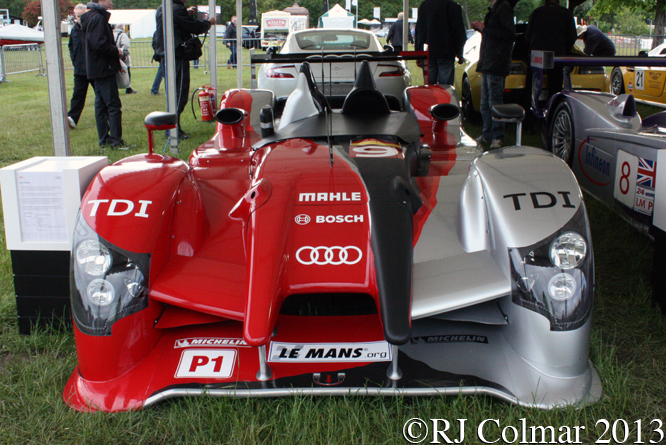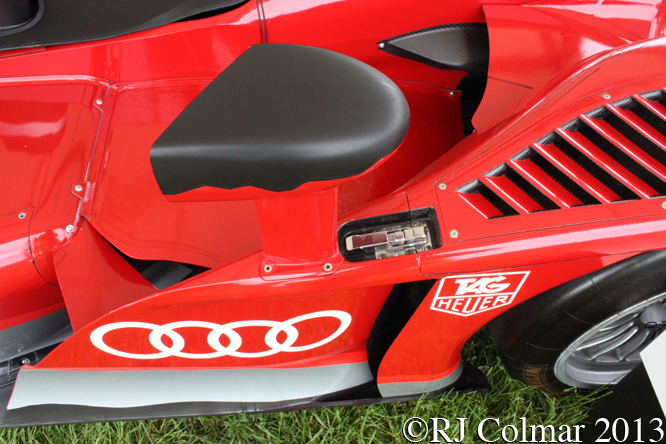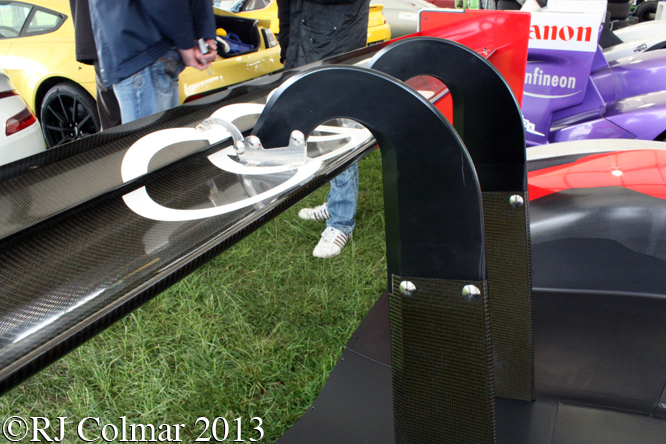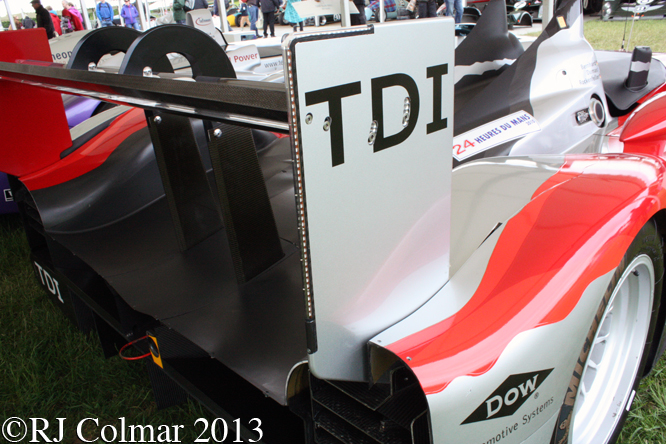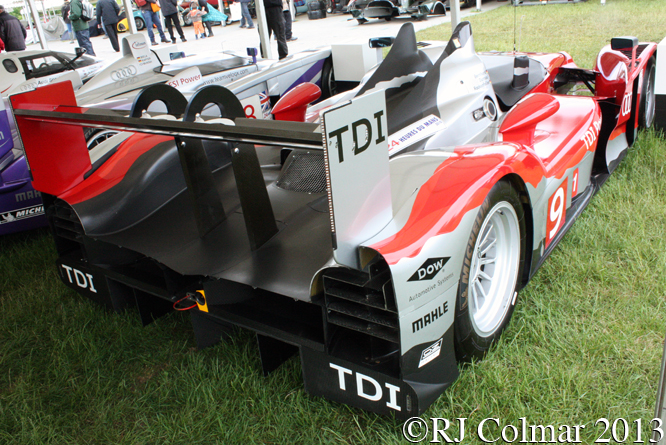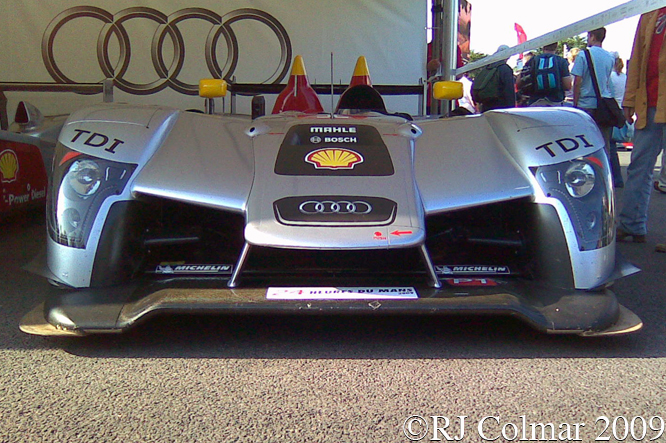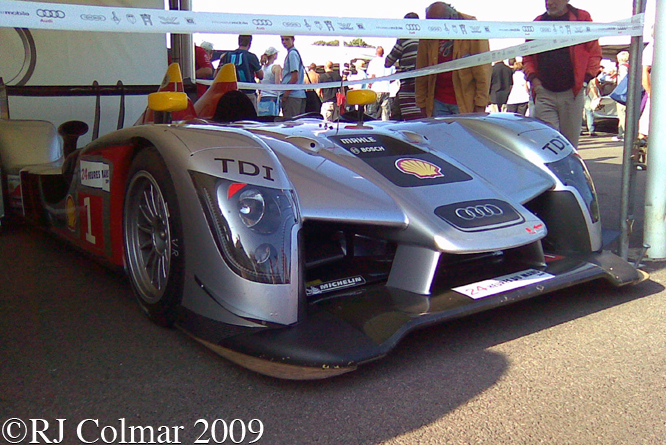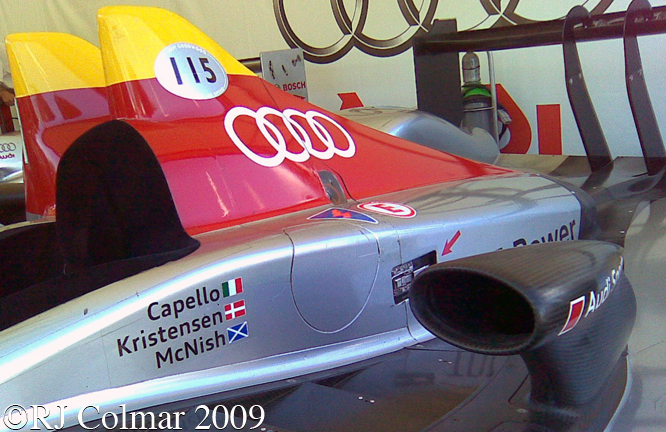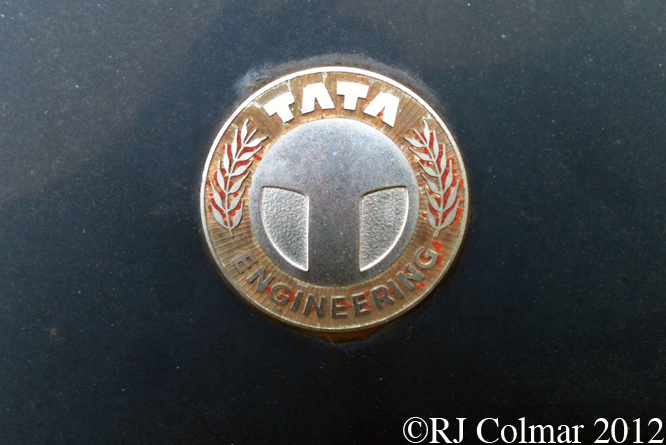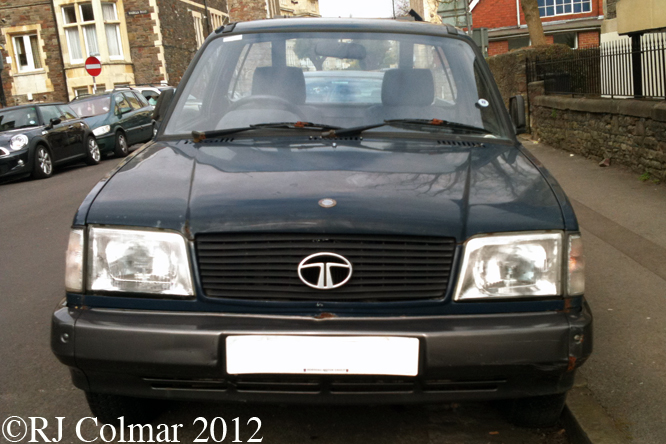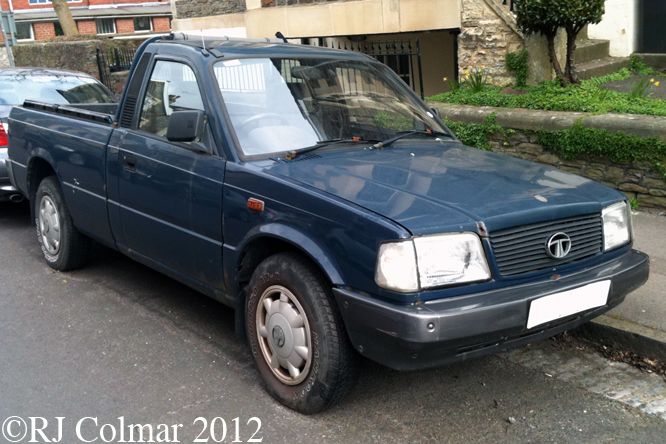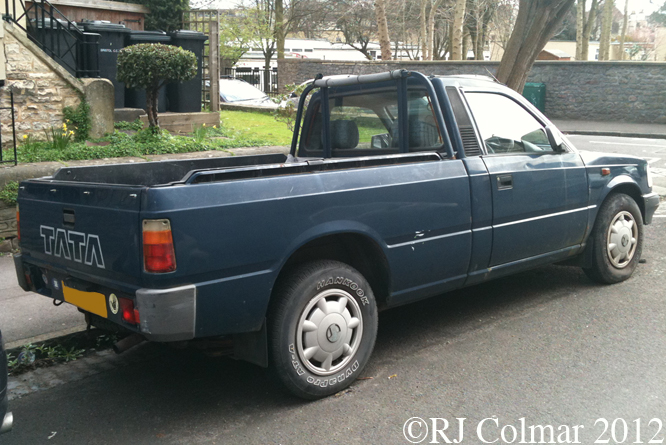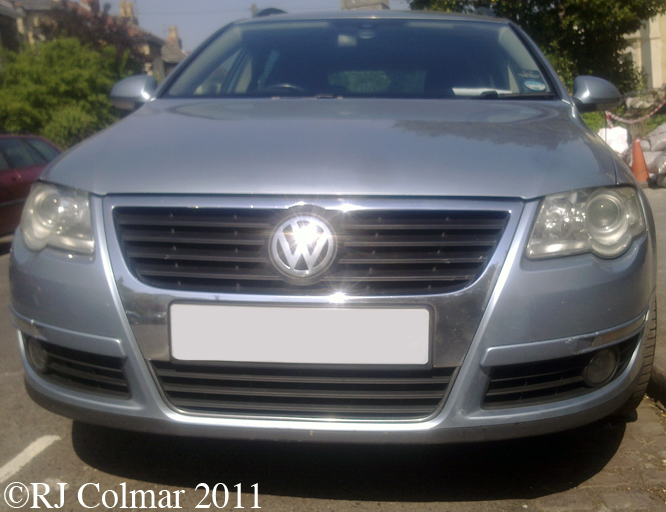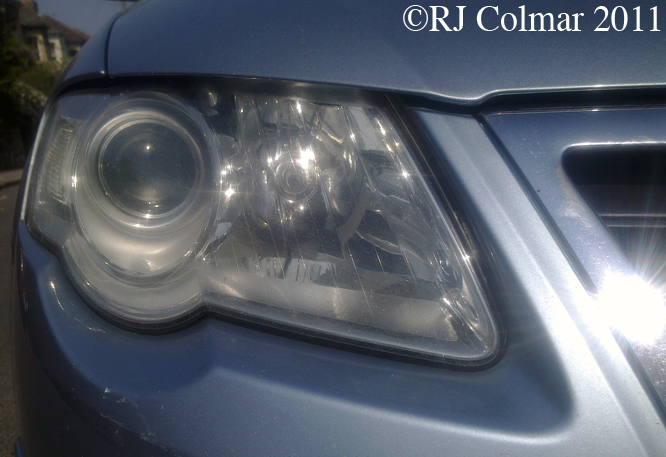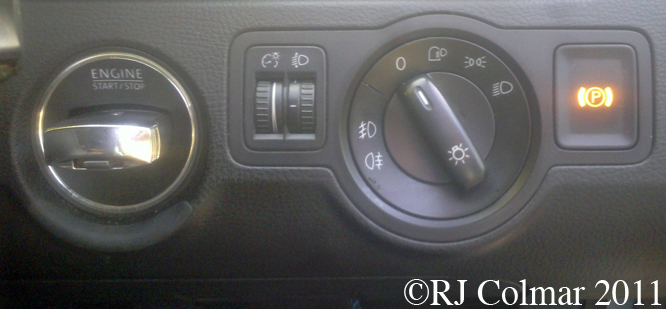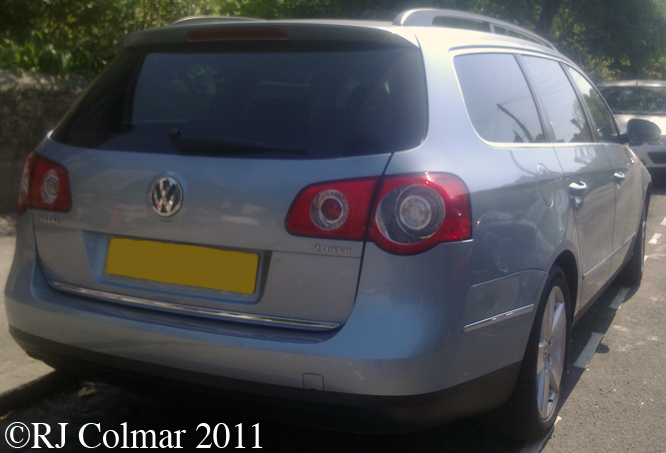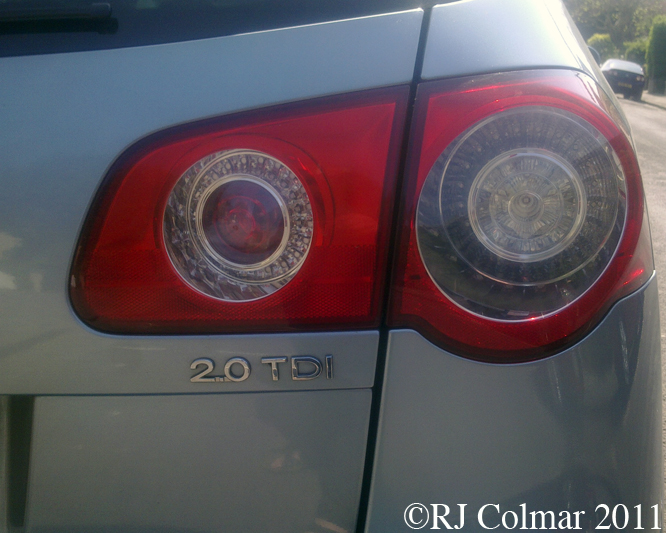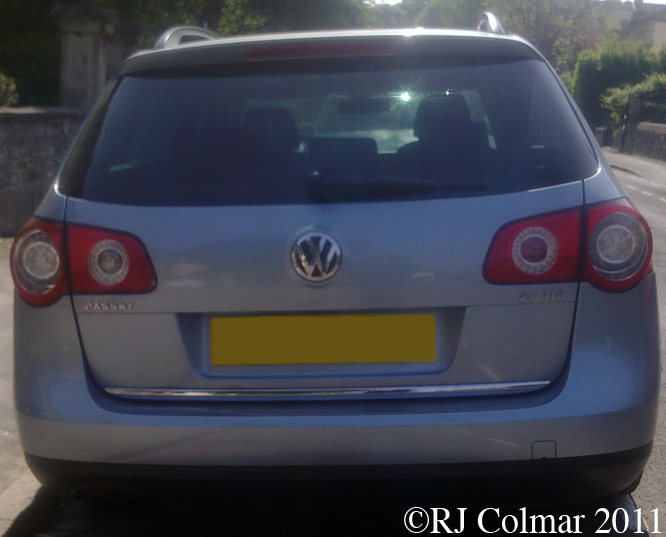New regulations, mandating a smaller motor and smaller fuel cell presented Audi with a new challenge for it’s 2011 Le Mans Challenge.
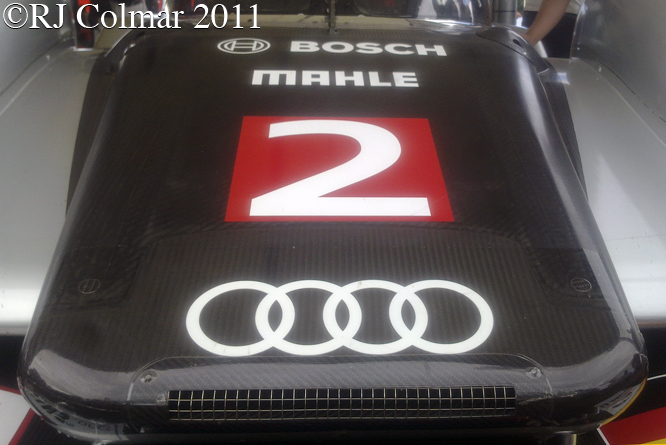
Ulrich Baretzky was responsible for designing R18 TDI to meet the new challenge and elected for a Coupé body,
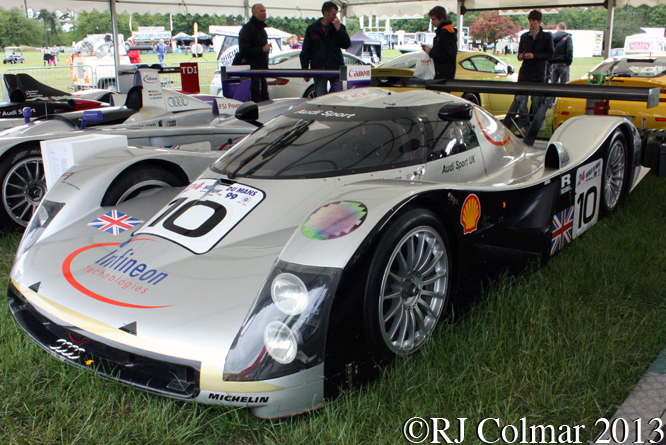
a body type not seen on an Audi Le Mans challenger since the Peter Elleray designed Audi R8C, seen above, built in 1999.
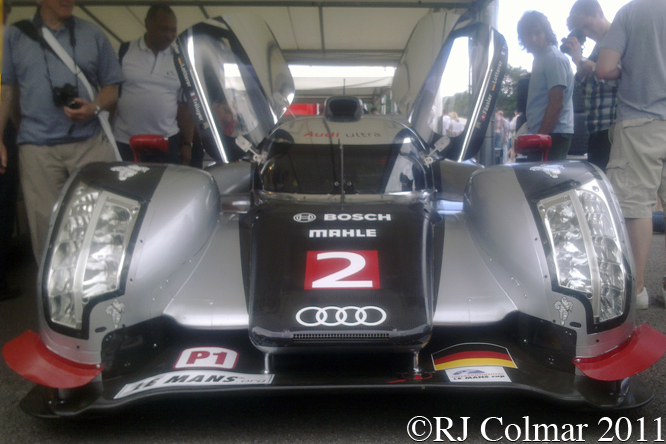
The single piece carbon-fiber composite aluminum honeycomb monocoque was manufactured by Dallara in Italy.
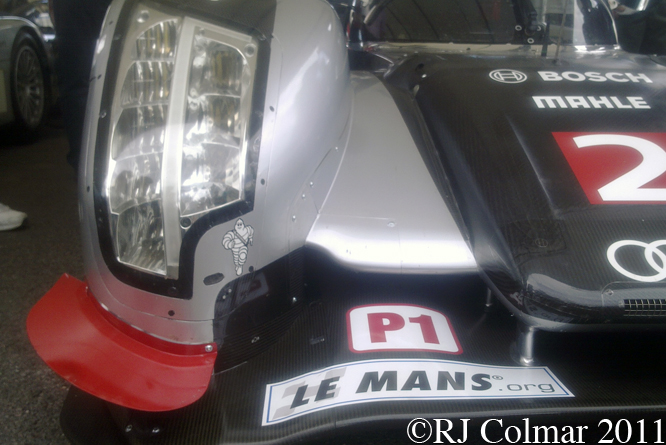
To improve the handling the R18 TDI is fitted with taller and wider front tyres, by effectively moving the mass of the car forwards the balance of the the car is better optimised for to create better front tyre temperatures which improve mechanical grip.
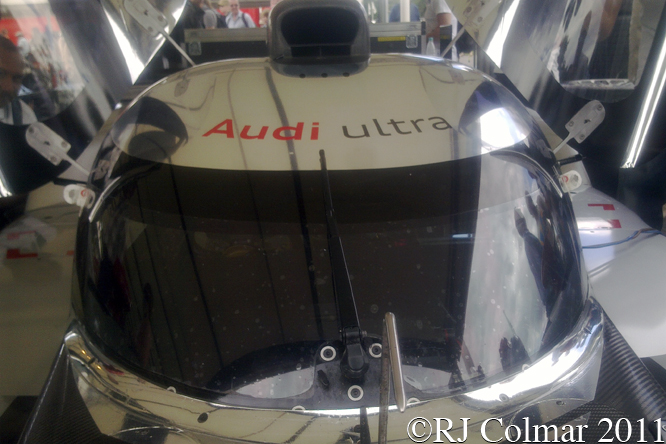
The L shaped tube in front of the cockpit is a Pitot tube for measuring airflow, this could be useful information for determining the aerodynamic balance of the car or more likely to help the engineers determine the engine settings for the motor which is fed air by the duct above the cockpit.
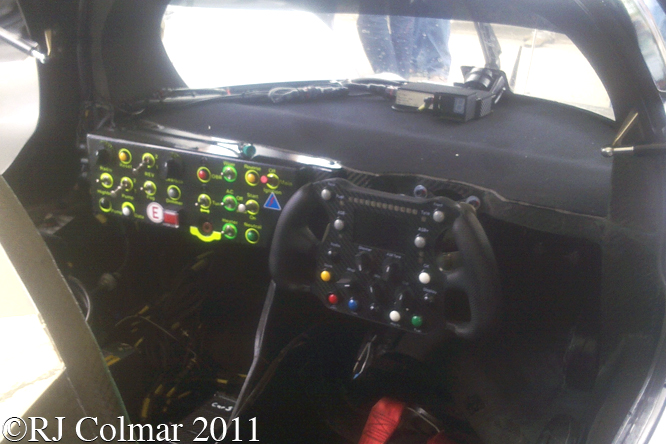
Unlike the previous R15 TDI Le Mans challengers fitted with a pneumatic gear selection system the R18 TDI six speed gearbox was fitted with an electronic gear change system, the main benefit of which was to save weight.
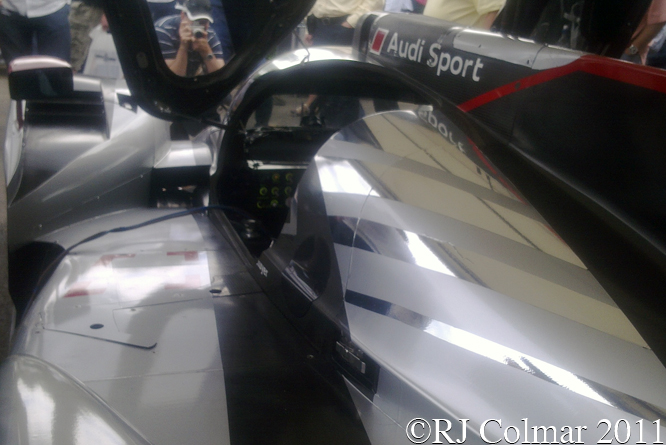
The fuel tank situated behind the cockpit was restricted to 65 litres / 14 imperial gallons comparable to that found in a large, European, daily driver.
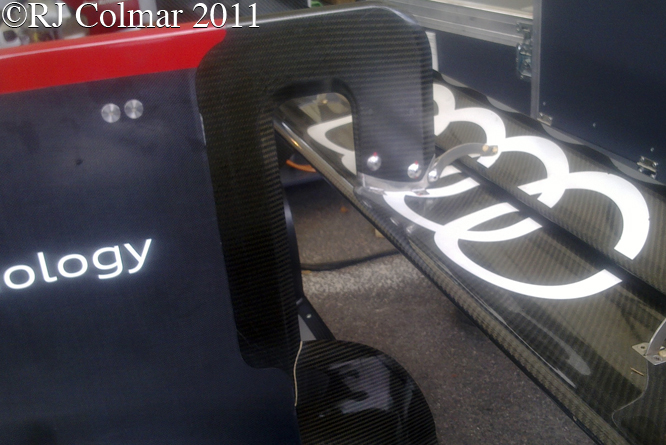
The motor was restricted in size to just 3.7 litres / 225 cui for turbocharged diesel powered motors and so a single turbocharged V6 replaced the twin turbocharged 5.5 litre / 335 cui V10 used to power the Audi R15 TDI.
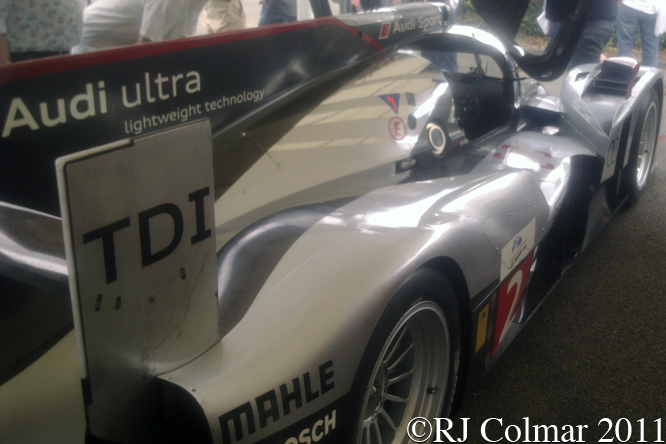
With only 532 hp, adown from 590 hp on the previous years V10 the R18 TDI chassis #106 seen here at Goodwood, driven by Benoit Tréluyer, Marcel Fässler, Andre Lotterer was three seconds a lap slower than the 2010 R15 TDI Plus, but still qualified on pole for the 2011 Le Mans 24 hour race.
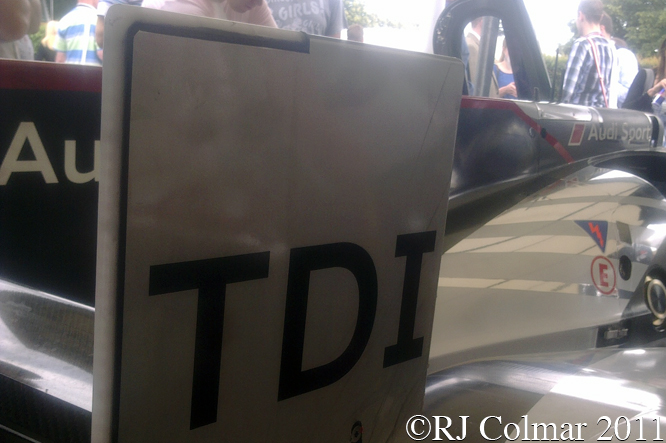
The 2011 Le Mans 24 hours proved to be a game of cat and mouse between the Audi and Peugeot teams. Audi had the advantage of outright speed, good tyre durability – capable of going 44 laps on a set of slicks, but poor fuel economy – only going 11 laps on a tank of diesel.
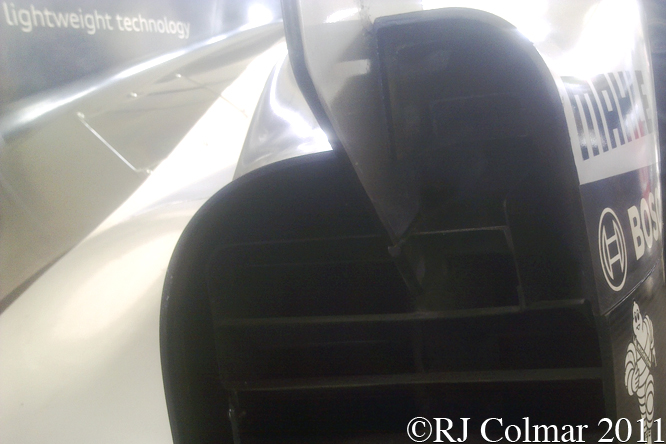
Peugeot meanwhile could run 12 laps on a tank of diesel, but only 36 laps on a set of tyres.
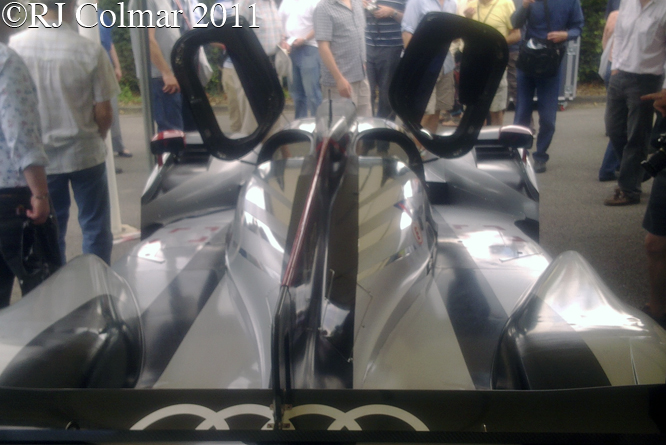
Audi’s cause was not helped when Allan McNish crashed the #3 entry out of the race in the first hour after tangling with a back marker in an incident from which everyone miraculously managed to walk away.
Seven hours later the #1 Audi driven by Mike Rockenfeller was involved in a similar incident from which he also walked away.
After the a 2 hour safety car period during which the track safety barriers were repaired the #1 Audi was left to fend off a three car onslaught from the diesel V8 powered Peugeot’s which did not suffer their first serious set back until the #7 Peugeot driven by Alexander Wurz hit the barriers and lost 3 laps.
The #1 Audi driven by Benoit, Marcel and Andre manged to pit for the final time without losing the lead and held on to cross the line, just 13 seconds ahead of the fastest Peugeot after 24 hours of racing.
#106 seen here a couple of weeks after the victory appears to have been retired from active competition thereafter. Apart from the Le Mans test weekend in April 2011 where Marco Bonanomi joined the cars regular squad of three drivers to set 4th fastest time the cars only other appearance was in the Spa 1000kms where Benoit, Marcel and Andre finished 5th from 2nd on the grid.
Thanks for joining me on this “New Rules Same Result” edition of “Gettin’ a li’l psycho on tyres” I hope you will join me again tomorrow when I’ll be looking at a British Group C Le Mans Challenger. Don’t forget to come back now !


